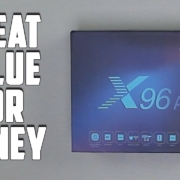7 Ways You’re Almost Definitely Overspending On Tech
You love tech. Whether you use it to make your days more productive at work, or your downtime more enjoyable at home, you have a hard time imagining your life without it. And while you’re passionate about learning about new developments in the world of technology, and how they will affect our lives, this passion can easily become an obsession. And while many of us have a healthy relationship with consumer tech, there are armies of marketing consultants working harder every year to make new tech seem more seductive and convince consumers that their lives are incomplete without the latest models. Whether it’s the latest smartphone, the latest tablet, PCs or game consoles, TVs, and physical media players, many of us are in love with the allure of these precision-engineered machines.

Image by KaboomPics via Pixabay
While we’re all in love with tech, we need to be aware that our tech will never love us back. And that we won’t be in love with the tech in our homes forever. When new models roll around we’ll need to make a difficult choice between sticking with the slightly lower-spec equivalents that we already have, or taking the plunge on something new. Many of us opt for the latter, and as such can risk seriously over-spending on tech. But fear not, this can be mitigated. Here we’ll look at some of the ways in which you could be overspending on tech, so you can save money on the gadgets you love.
Being an early adopter
When a new iPhone hits the store, you’re the one that has to be first in line. When a new game console is released, you have to be able to brag to your friends about it. If your TV and sound system doesn’t draw audible gasps of admiration for visiting guests, you instantly start wondering if you should replace it. But while being an early adopter has a certain degree of prestige value, it also carries certain risks.
Early adopters pay more. They also inherit a lot of the teething problems. They have to sit around waiting for software patches to make their tech more usable. They have to make do with a limited selection of games that don’t use the hardware to its full capability… because the full capabilities have yet to be truly established. They are the first to get stung by the obsolescence cycle (hello to all early iPhone 8 adopters). They tend to be the ones who get the least value for money over their tech’s lifespan.
While waiting a few months (or *gasp* even a year) may rob you of the prestige of being first in line, it will almost certainly save you money and ensure that you get more out of your product.
Buying brand new all the time
Being able to break open an untouched box and lay your hands on a pristine piece of consumer tech is a wonderful feeling. But it’s one that comes at a premium. While many tech enthusiasts are wary of buying used consumer electronics (who knows how responsibly their previous owners were with the,) there are significant advantages to buying refurbished models. These are often virtually brand new, fully functional, and backed by a generous warranty. They afford you all the benefits of buying new with discounts of up to 50%. If you’re not too fussy about the visual condition of your tech, you may also save a small fortune by purchasing ex-display models from stores. You’d be amazed at what you could save if you’re prepared to put up with a couple of scratches, a small dent or a persistent patch of sticker adhesive. Speaking of which
Paying the sticker price
In your zeal to get your hands on the latest tech, don’t be duped into paying the sticker price when you can buy the exact same product for less. Whenever you shop online, use apps or plugins like Honey to see if you could buy the exact same product cheaper elsewhere. These browser extensions scour the internet in seconds, making sure you have the best access to the products you’re browsing anywhere in the world.
In this digitally enlightened age, there’s no reason to pay the sticker price, even if you insist on buying brand new.
Getting your phone and your data plan from the same place
It’s always nice being able to see the admiring glances when you whip out the latest smartphone, whether you’re showing friends a cool photo you took at a party, or making a contactless payment in a store through it. At least… until the next model comes along. Still, while you may insist on getting the latest smartphone, you’re probably less keen to be over charged for it. And if you’re getting your phone and your data plan under one roof, there’s a chance you’ll be over-charged for one or the other or both.
Because service providers know that consumers are keen to get their hands on the latest models, they may pair them with sub-par tariffs. This could mean that you spend more not just on your phone, but on the data, minutes and texts that you use. If you’re still paying upwards of £25-£35 a month just for your tariff as well as paying off the finance on your phone itself, you’re almost certainly spending too much. Take a look at some of the smaller service providers out there and you may be pleasantly surprised to learn that you can get deals with Limitless data for less than £20 per month. Why pay more for less?
Thinking like a collector
Many tech enthusiasts think of themselves as collectors and connoisseurs. Their spare rooms and attics are chock full of boxes upon boxes of unused retro tech including old games consoles and computers, boxy CRT TVs, VHS players and tapes and maybe even the odd hard drive, handheld, smartphone or games console. Even though they may get little or no use, we cling to these pieces that we know will never see the light of day. But there comes a point at which we need to learn to cut our losses.
There’s a fine line between being a collector and becoming a hoarder. You may want to keep hold of old tech until it stops being obsolete and starts to become a curio. Retro gaming, for instance, is a huge industry and well-maintained consoles from the ‘80s and ‘90s go for a pretty penny in the used market. Even VHS still has a dedicated fanbase. Hoarding old tech that is less desirable, however, can see you hold on to it long past the sweet-spot where it is still valuable. Sell your old tech while it is still relatively new and you can mitigate a substantial amount of the cost of its replacement.

Image by Free Photos via Pixabay
Paying extra for Netflix in 4K
If you’re a tech enthusiast, there’s a good chance that you’re also a bit of an AV snob. No matter what the content, you want to be able to watch it in the best possible quality. Thus, when Netflix made the jump to 4K UHD and High Dynamic Range a little while ago, you likely upgraded your account straight away. Yet, while the difference may seem fairly negligible it all adds up by the end of the year. And despite Netflix’s adoption of a new codec to facilitate faster streaming without compromising quality, the difference between HD and UHD may be tricky to perceive on a streaming service.
Especially since, especially in some countries like the UK and Europe, bitrate has been limited to 7.62 Mb/s to reduce server strain. Even at full speed, Bitrates are pretty paltry (15-12 Mb/s). Compare this to a Blu Ray disc’s 54 Mb/s and 100 Mb/s for a 4K UHD disc and that’s a lot of data that’s not making it to the screen. You may be better served by sticking with HD until your broadband’s capabilities can overcome the bottleneck of bitrates. For movies and TV shows that you absolutely have to see in all their glory and detail invest in 4k UHD Blu Ray discs for the best viewing experience.
Buying software that you can get for free
Finally, tech geeks aren’t just in love with hardware, we also love to get our hands on the latest software, too. But there are lots of ways to get highly capable software without having to spend a fortune. No, we’re not talking about resorting to piracy. Just taking the time to research free alternatives. For instance, those still paying for MS Office may find that Google Docs not only saves them money, but is also a better office suite. Likewise, those still paying for a VPN may want to look into these high-performing free alternatives.
Nobody’s saying you have to abandon your love affair with technology. However, in these economically uncertain times, we can all benefit from saving a little extra money on our tech. At a time when we have so many ways to save, there’s certainly no need to overspend.










Leave a Reply
Want to join the discussion?Feel free to contribute!